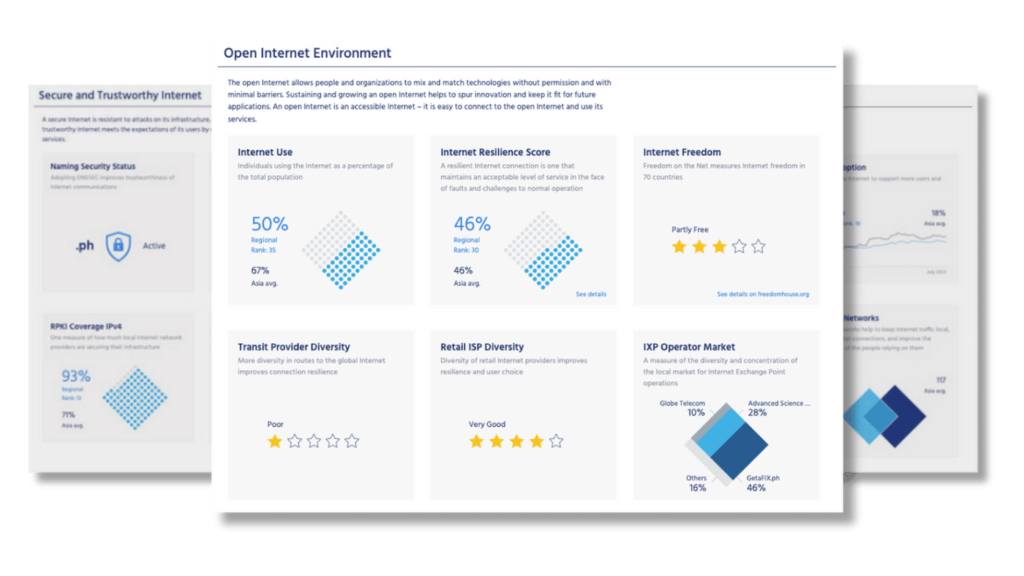Every day as I get my son ready for daycare, I recite seven words: “Hey Google, what’s the weather like today?” The results from this now-‘ritual’ search dictate what he’ll wear, what type of extra clothes I will pack, and whether we’ll need a jacket for the bike ride.
Whatever way you seek to learn the day’s forecast, the medium that you’re consulting isn’t physically measuring or predicting the weather but is relaying the measurements and predictions of those that do in a digestible manner. The Internet plays a significant role in distributing and communicating this information but also helps meteorologists collect data from all parts of the world, including remote sensors, to improve these predictions.
Meteorologists will be the first to admit they don’t always get their predictions right. However, they do an exceptional job considering the thousands of different factors they need to account for, and hundreds they can’t, to determine why it rained in one neighborhood but didn’t in the next. The fact that you can get such localized weather conditions is a modern marvel that most take for granted.
Considering society’s reliance on reliable, secure, and increasingly fast Internet connectivity, measuring the Internet is similarly important and challenging as predicting the weather and measuring the climate. It’s why we established Internet Society Pulse, which in many ways works like your weather app to provide a snapshot of the health, availability, and evolution of the Internet.
While the Internet is not bound by geopolitical borders, it’s natural that many people are interested to know the strengths and weaknesses of the Internet in their own country. The Internet Society Pulse Country Reports help with this by consolidating and providing context surrounding the four Pulse research themes for every country, state, and region globally.

What Goes Into a Country’s Internet Health?
Without reviewing the data, it’s difficult to speculate just how healthy a country’s Internet is or isn’t. One may seem healthy because service is fast or easily accessible, but there are many factors that are considered when assessing the health of a country’s Internet. We grouped these factors into three areas:
Open Internet Environment
An open Internet allows people and organizations to mix and match technologies without permission and with minimal barriers. Sustaining and growing an open Internet helps to spur innovation and keep it fit for future applications. An open Internet is an accessible Internet—it is easy to connect to the open Internet and use its services.
Globally Connected Infrastructure
A globally connected Internet is inclusive. It allows networks and users to interconnect without geographical restrictions. Increasing the connectivity of the Internet makes it more valuable to every participant as a tool for communications, learning, and commerce.
Secure and Trustworthy Internet
A secure Internet resists attacks on its infrastructure, delivering a robust service to its user community. A trustworthy Internet meets the expectations of its users by offering a resilient and reliable base for applications and services.
The Pulse Country Reports illustrate data that Pulse collates from various open sources, including APNIC Labs, Facebook, Google, ICANN, IIJ, ITU, Mozilla Firefox Telemetry, PeeringDB, and W3Techs. This data explains the health of the open Internet environment, globally connected infrastructure, and secure and trustworthy Internet for each country.
Why Measuring the Internet is Important
Predicting faults, or attacks, before they happen is the holy grail of Internet measurement and operations. Those who operate and maintain networks continually monitor the performance of their networks so they can react quickly and, by and large, do a terrific job at doing this to keep their customers happy. And some of those that measure the Internet are working to improve the resolution of the health of the Internet at its edges.
The Pulse Country Reports don’t provide this ‘localized’ view (yet) but a step back from this to show the collective health of all the networks in each country. This vantage can assist:
- Policy and decision-makers to understand what aspects of the Internet need to be improved and work towards enabling policies to support improvements.
- Civil society groups and journalists to advocate and lobby for more investment and improvements to infrastructure and security in low-scoring areas.
If we take a look at the Philippines’ country report, we can see that there are several areas that decision makers and advocates can focus their attention to improve the health and resilience of the country’s Internet, including factors that can:
- Increase the number of Internet users.
- Improve the Internet resilience of the country, such as improved infrastructure, performance, security, and market structures.
- Encourage service providers to improve the diversity of their international routes and local peering, both important factors to increase the robustness of the Internet in the country
- Content providers to secure the DNS that underpins their sites.
Read: Philippines Internet Resilience Trending in the Right Direction
Ultimately, the Pulse Country Reports provide a high-level view of the health of the Internet to inform and focus the choices of decision-makers who can then validate the perceived weaknesses and enact decisions to invest in policy and infrastructure developments that will improve the Internet for each country and by default, the global Internet.
Who knows, when my son grows up and is getting his child ready for daycare, maybe he’ll ask his smart device, “What’s the Internet like today?”

